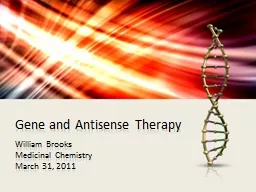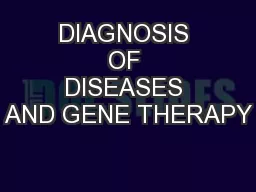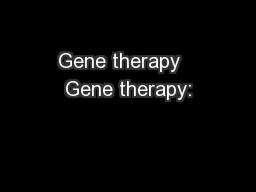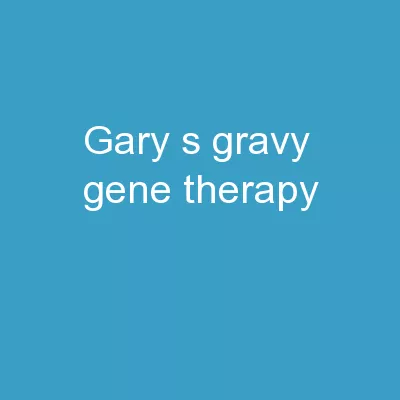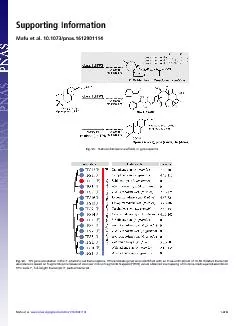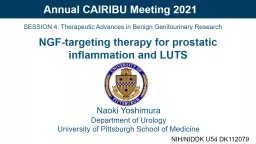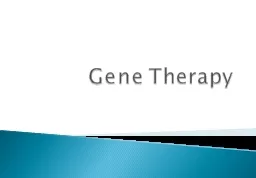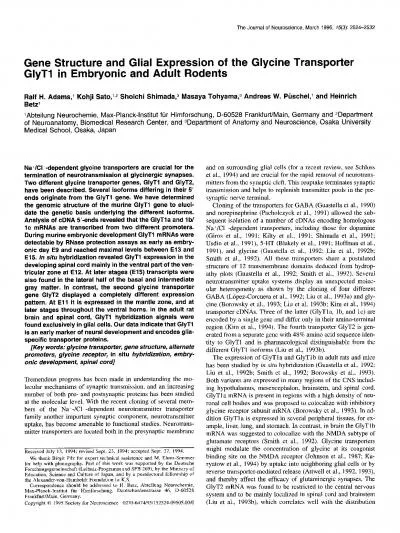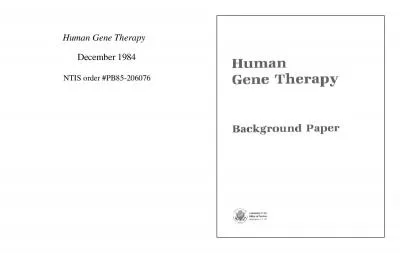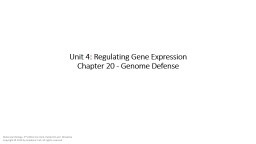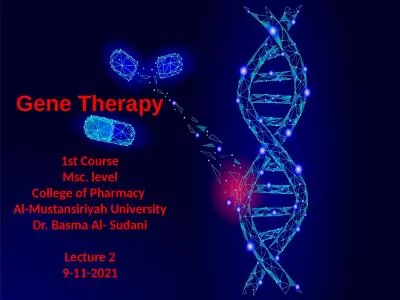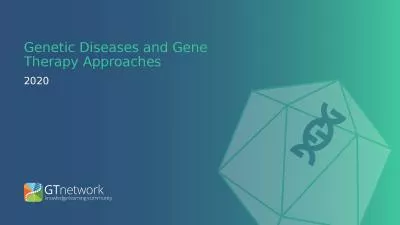PPT-Gene and Antisense Therapy
Author : ellena-manuel | Published Date : 2018-10-06
William Brooks Medicinal Chemistry March 31 2011 Outline Conventional drug design vs gene therapy Examples of genetic engineering Types of gene therapy Mechanisms
Presentation Embed Code
Download Presentation
Download Presentation The PPT/PDF document "Gene and Antisense Therapy" is the property of its rightful owner. Permission is granted to download and print the materials on this website for personal, non-commercial use only, and to display it on your personal computer provided you do not modify the materials and that you retain all copyright notices contained in the materials. By downloading content from our website, you accept the terms of this agreement.
Gene and Antisense Therapy: Transcript
Download Rules Of Document
"Gene and Antisense Therapy"The content belongs to its owner. You may download and print it for personal use, without modification, and keep all copyright notices. By downloading, you agree to these terms.
Related Documents

